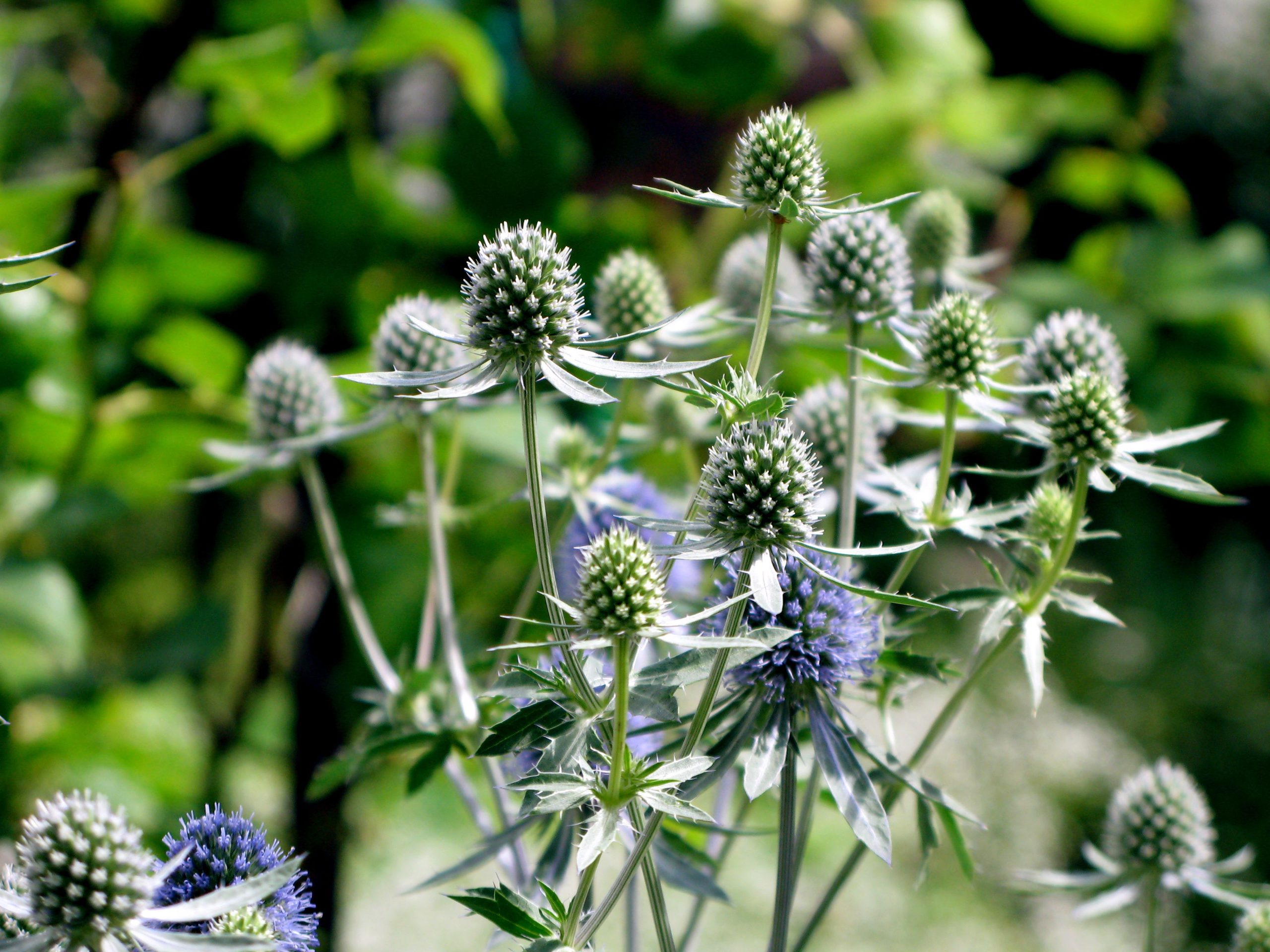Thistles often get a bad rap as invasive weeds that can quickly take over a garden. While some types of thistles do fit that description, there are many thistle-like flowers that provide wildlife benefits without becoming a nuisance
These thistle lookalikes add unique textures and colors to the garden. Their nectar-rich flowers attract pollinators while their seeds provide food for birds. Best of all, they are better behaved than their weedy thistle cousins.
If you love the look of thistles but not their aggressive spreading habits, consider adding one of these thistle-like beauties to your garden.
Globe Thistle
Globe thistle (Echinops ritro) is a clump-forming perennial with round steel-blue flowers. Its compact habit makes it well-suited for borders and cottage gardens. The prickly looking blooms hold their color when dried, making them useful for everlasting arrangements.
Native to Europe and Asia, globe thistle thrives in full sun and well-drained soil. It is drought tolerant once established. The spiky metallic blooms add striking texture and color to arrangements and attract butterflies.
Sea Holly
Sea hollies (Eryngium species) offer thistle-like flowers in shades of blue, purple, and silver. The prickly blooms are held atop stiff stems surrounded by spiny silver-green foliage. Sea hollies make a bold statement in borders, rock gardens, and containers.
Sea hollies are native to Europe but thrive in USDA hardiness zones 4-9 Plant in full sun and provide good drainage Sea holly adds drama and wildlife appeal to a dried flower bouquet, It makes an excellent cut flower with a long vase life,
Miss Willmott’s Ghost
Miss Willmott’s Ghost (Eryngium giganteum ‘Miss Willmott’s Ghost’) offers huge silver-white blooms that look almost supernatural. As the nickname suggests, this variety was named after a British horticulturist who secretly scattered seeds of the plant in neighboring gardens.
This biennial thistle relative thrives in zones 5-9. It reaches up to 5 feet tall at maturity and does best in full sun. Miss Willmott’s Ghost adds bold texture and its nectar-rich blooms attract bees, butterflies, and other pollinators.
Basket Flower
Basket flower (Centaurea americana) provides the look of thistle without the prickles. Its shaggy blooms resemble purple artichokes perched atop branching stems. The fern-like foliage adds softness and texture.
Basket flower is native to the central and western United States where it thrives in prairies and meadows. Plant it in full sun and well-drained soil. This tough perennial survives drought, heat, humidity, and poor soils. Plant it to attract butterflies and bees to your garden.
Artichoke
It may come as a surprise that the artichoke (Cynara scolymus) is actually a type of thistle. Artichokes thrive in warm climates and produce edible flower buds that resemble thistles.
Most gardeners grow artichoke for its tasty buds, but its giant silver-green foliage and electric purple blooms make a stunning addition to borders and cottage gardens. Artichoke is easy to grow in zones 7-11 and does well in poor, dry soils.
Scotch Thistle
Despite its prickly demeanor, Scotch thistle (Onopordium acanthium) offers architectural interest to the garden. Scotch thistle can reach heights over 10 feet with purple thistle-like blooms atop branching stems with spiny wings.
Use caution when planting Scotch thistle, as it can be invasive in some regions. Scotch thistle is a biennial or short-lived perennial hardy in zones 3-9. It thrives in full sun and dry soils. The tufts of thistle provide food and habitat for birds.
Cardoon
Cardoon (Cynara cardunculus) offers huge, deeply lobed gray-green leaves that look like giant thistles. Clusters of purple thistle flowers rise above the foliage in summer. Cardoon is related to artichoke and some varieties have edible flowers and stems.
Grow cardoon as an annual or short lived perennial in zones 8-10. It thrives in full sun and fertile, well-drained soil. Cardoon can reach 6 feet tall and 4 feet wide. Use it as a bold architectural plant or edible ornamental.
Invite Thistle Lookalikes to Your Garden
Add unique colors, shapes, and textures to your garden with thistle-like flowers. Their nectar and seeds support bees, butterflies, birds, and other wildlife. Unlike their weedy cousins, these thistle lookalikes add beauty without becoming a nuisance. Plant a few in borders, meadow gardens, or containers.
Sow Thistles – Identification, Description and Some Edible and Medicinal Uses
FAQ
What are the flowers that look like thistles?
What is a tall plant with thistle-like flowers?
What is similar to a thistle?
Why is creeping thistle bad?
- A Complete Guide to Caring for Yuki Cherry Blossom Shrub - January 23, 2025
- Identifying Red Hot Poker Seeds: What to Look For When Harvesting Torch Lily Pods - January 23, 2025
- A Complete Guide to Harvesting Evening Primrose Seeds - January 23, 2025

